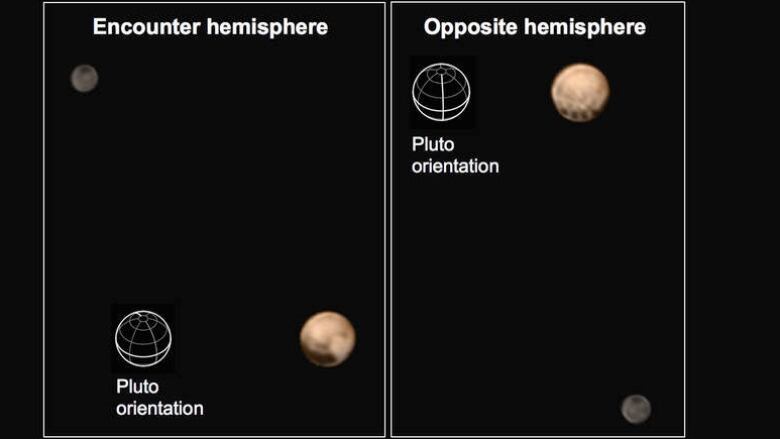New Horizons spacecraft shedding light on mysterious Pluto
Equatorial spots and frozen methane on surface revealed as probe moves closer to dwarf planet

NASA's New Horizons spacecraft is revealing more mysteries about Pluto the closer it gets to the dwarf planet.
Scientists hope some of the information the spacecraft collects in its upcoming closest-ever flyby will help answer some of their questions about the faraway body.
New Horizons launched Jan. 19, 2006, and is expected to have its closest encounter with Pluto in two weeks,on July 14. It is currently less than 15 million kilometres away from the Pluto system, according to NASA.
The spacecraft will fly by Plutoand take pictures of the planet and its moons, observing its atmosphere to help determine its composition.
Recent images captured by New Horizons revealed Pluto's two distinct faces. One face showed a series of four evenly spaced spots along the dwarf planet's equator.
NASA said scientists have not yet seen anything like these spots on Pluto, which are particularly interesting to the New Horizons science team because of their consistency.
The spots are about 480 kilometres in diameter, NASA said. Each one is about the size of Missouri, or about 180,500 square kilometres.
"It's a real puzzle we don't know what the spots are, and we can't wait to find out," Alan Stern, New Horizons principal investigator, said in a statement.
Their origin story may be revealed as New Horizons moves closer toward Pluto.
Another mystery from the photos, said Stern, is the "longstanding and dramatic difference in the colours and appearance of Pluto compared to its darker and greyer moon Charon."
Frozen methane detected
The spacecraft also recentlydetected frozen methane on Pluto's surface.
The spacecraft used its infrared spectrometer to find the odourless, colourless compound, NASA announced earlierthis week.

"We already knew there was methane on Pluto, but these are our first detections," said the New Horizons surface composition team leader, Will Grundy, in a statement on NASA's website.
It's possible the methane dates back to Pluto's creation and was "inherited from the solar nebula from which the solar system formed 4.5 billion years ago," NASA wrote in its announcement.
As New Horizons approaches Pluto, it is expected to provide even moreinsight into the faraway body.
"Soon, we will know if there are differences in the presence of methane ice from one part of Pluto to another,"Grundy said.












_(720p).jpg)


 OFFICIAL HD MUSIC VIDEO.jpg)
.jpg)



























































































